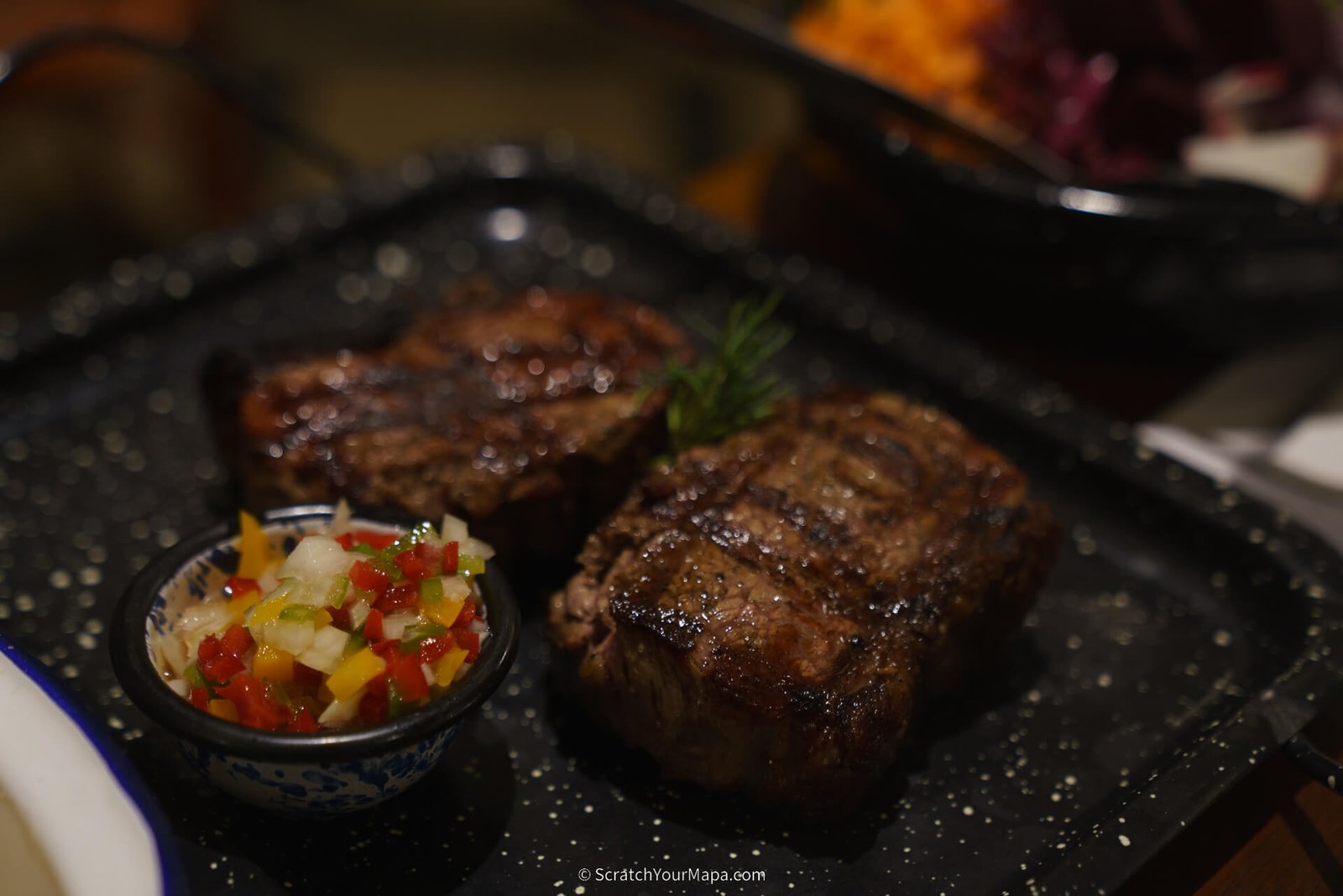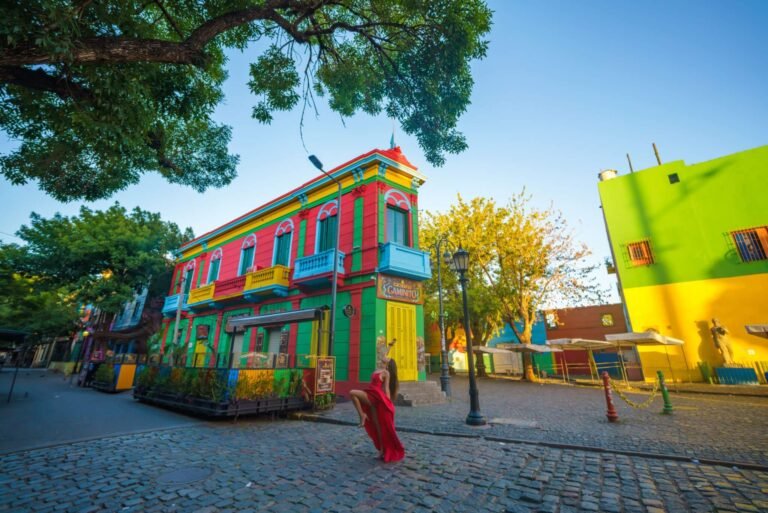The Best Traditional Food In Argentina (#9 Will Surprise You!)
Have you ever wondered what makes traditional food in Argentina so good? The answer may surprise you. It’s not the mix of unique spices like other countries, and it’s not the cooking method either. You could say that Argentina has a very standard way of cooking.
What makes traditional food in Argentina so good is its natural resources. The soil is very fertile, and they have access to glacier water. These two elements alone make all the difference in their meat, their vegetables, and even the dough for their pastries!
Here are 9 essentials that you need to try on your next trip to Argentina.
Asado
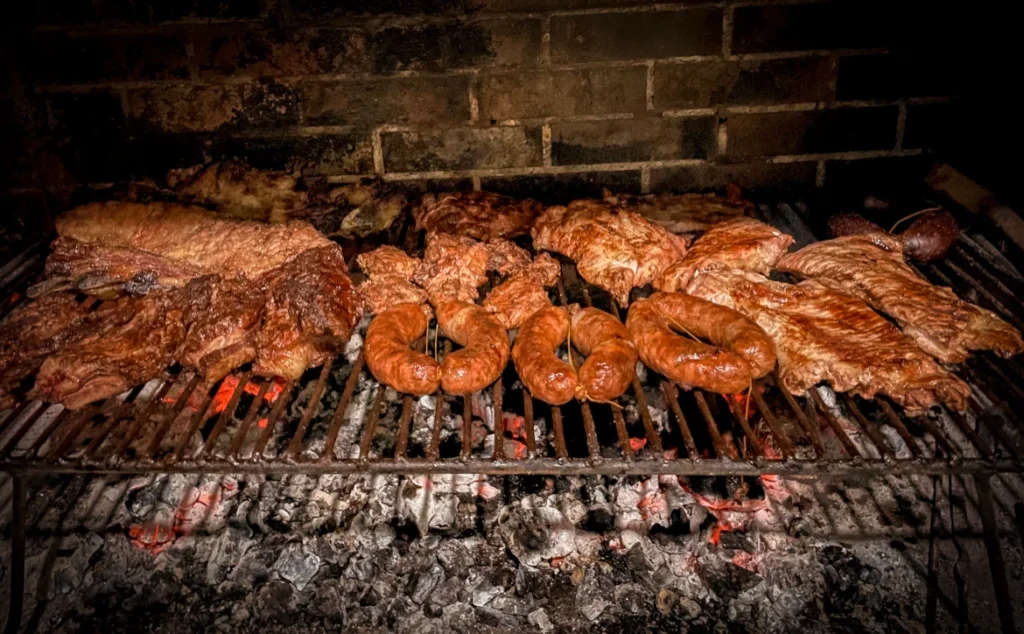
Asado is, simply and shortly, a cut of steak. It’s by far the food that Argentinians are the proudest of. The simplicity of the dish is only exceeded by its taste.
Argentina’s meat is considered to be one of the best (if not the best) in the world, and the reason is simple: The soil is very rich and fertile, and cows are raised in open fields. They can eat all the natural grass they need, walk around all day, and enjoy a good life. This makes, of course, tender and tasty meat.
It’s important to know that “asado” literally translates as “grilled”, but there are two ways the word can be used:
Asado (food)
This refers to a specific cut of meat, part of the cow’s ribs, and the most popular cut in the country.
Asado (experience)
Argentinians LOVE to talk and get together for hours. An ‘asado’ is a barbeque that goes on for several hours, where meat is grilled slowly (anywhere from 1 to 3 hours on the grill) while people drink, eat snacks, and socialize.
Empanadas

Empanadas consist of dough and a filling. If you’ve never seen one, they have the same logic as a dumpling or a small calzone. I have always liked saying that empanadas are “little doors to a world of flavor”.
The most popular flavor is meat, but the interesting part is that different provinces have added a different twist to it: some mix it with olives; others with potatoes; some even marinate the meat with Malbec wine!
The best part? Nowadays you can find an endless amount of new flavors, and THAT is why an empanada is simply a “little door to a world of flavor”. Which world it leads to is completely up to the creator.
Psst! If it’s your first time in the country, and you’re looking for traditional food in Argentina, make sure to add these flavors to your list:
- Humita (Mix of corn and cream sauce)
- Jamon y queso (Ham & Cheese)
- Verdura (mix of veggies with cheese)
- Carne a cuchillo (meat empanada, but with chopped meat rather than ground beef)
Locro
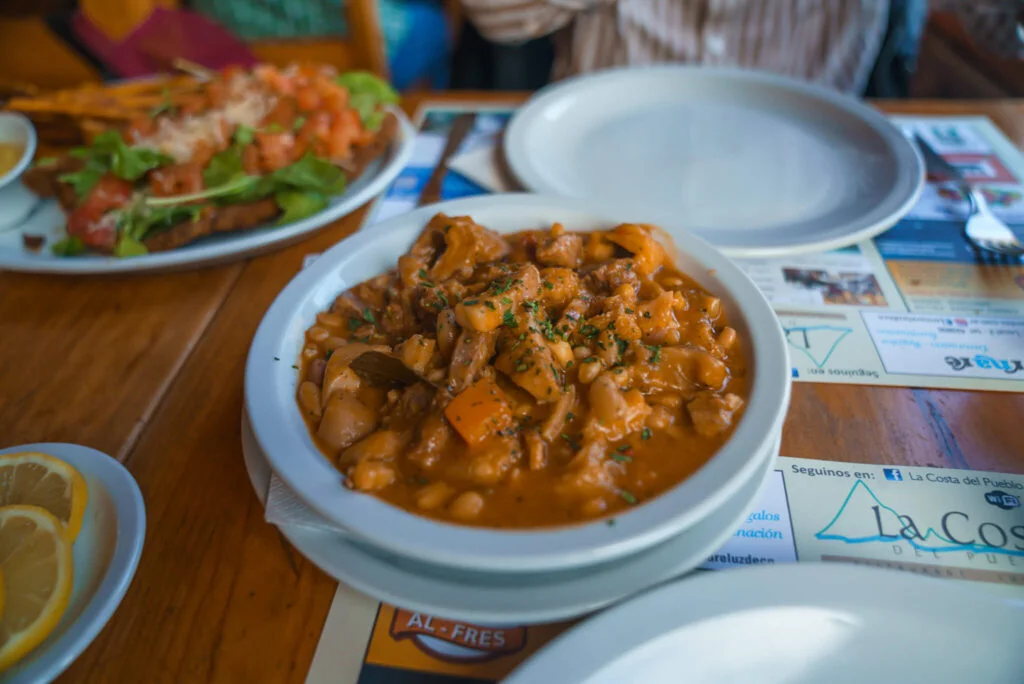
A winter stew that has it all: pork, pancetta, sausage, pumpkin, veggies, beans, and a lot of flavor. The word comes from a prehispanic language, quechua, and it varies depending on the region.
If traditional food in Argentina is what you’re looking for, locro is probably the most iconic one. It’s an Argentinian tradition to prepare locro every year on May 25th, which is the holiday of “May Revolution” is celebrated, in honor to the first independent government in the country. This was the first step towards Argentina’s independence and, therefore, a big day for Argentinians.
Choripan
The word “choripan” is the mix of “chorizo” (Argentinian sausage) and “pan” (bread). This simple combination is as effective as it is popular. Just like with the asado, sometimes simplicity can be your best ally.
It’s usually mixed with one of two popular sauces: ‘chimichurri’ and ‘salsa criolla’. The first one consists of olive oil, vinegar, garlic, red pepper flakes, parsley, and dried or fresh oregano. The second one, of chopped tomato, red pepper, and onion.
It’s very common to find vendors outside any big event selling them in a small grill on the street. It’s also very common to find choripanes available in every steakhouse (which, in case you didn’t know, there are hundreds of thousands across the country!). You can basically get a choripan any day, at any time!
Milanesa napolitana
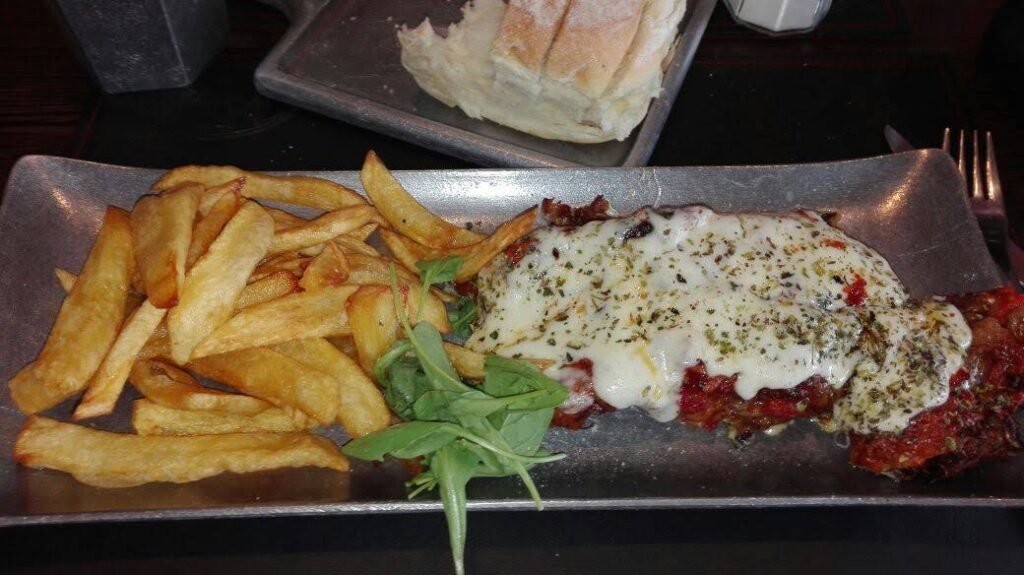
A milanesa napolitana is a breaded, thin steak, fried (or baked) with tomato sauce, ham and cheese on top. A (great) twist on the well-known chicken parmesan.
The irony comes from the name itself. The word ‘milanesa’ means ‘from Milan’ (north of Italy), but ‘Napolitana’ means ‘from Napoli (south of Italy). It was created in the 1940s by a cook in Buenos Aires who wanted to hide the fact that one of his regular ´Milanesas´ was burnt, so he added sauce, ham and cheese on top. Little did he know, it would become a traditional food in Argentina.
Mate
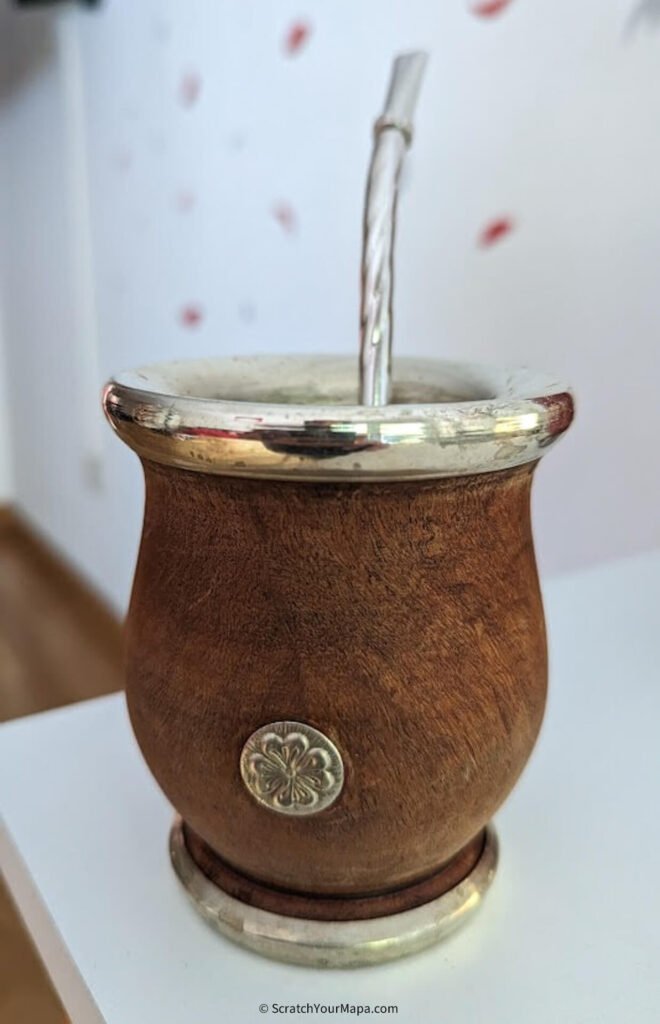
It’s a hot beverage made out of herbs from the north of the country. Similar to tea, but not so much. Mate is probably the thing you will see the most on the streets in Argentina.
There are 3 key elements to a good mate:
1. Yerba mate (the herbs)
2. A special metal straw (with a filter at the bottom)
3. A cup/container (the original one is made out of pumpkin, but it can also be wood, plastic, metal, and any other material you can think of).
Unlike regular tea, where you just pour hot water once and drink from a cup, here you have to pour constantly. First, add the yerba mate inside the container. Then, insert the straw and let it rest toward the wall of the container. Lastly, pour hot water and take a few sips. After your mate is out of water, pour again.
Mate is also a social drink. People share it wherever they go. They just go through the same procedure of pouring a bit of hot water, and after it’s done, they pass it to the next person.
Fun Fact: If you encounter an Argentinian ANYWHERE IN THE WORLD and they’re drinking mate, you can approach them and ask them if they could share one with you. They will ALWAYS say yes!
Dulce de leche
Dulce de leche is a spread made out of caramel and milk. Instead of only burning sugar to make caramel, you mix it with milk and boil it slowly while stirring for hours. This one is for the people with a big sweet tooth!
The result? The texture of Nutella, with a rich, caramel flavor that Argentinians love to put everything. Sweet pies, pastries, toasts, and even inside sweet empanadas.
Alfajores
Another popular sweet you can find all over the country. Grab two cookies, and make a dulce de leche sandwich with it. Oh, and when you’re done, cover it with chocolate! Alfajores can be found in every single kiosk and supermarket in the country.
They’re so popular that over 30 brands have created their own variations. The one type of alfajor that remains different from the rest is the ‘alfajor de maicena’, which has a different composition. They are made out of cornstarch biscuits, and around the dulce de leche there’s a ring of coconut flakes.
Medialunas

Medialunas are a sweet pastry that looks and feels exactly like a croissant. The core difference is that medialunas are made with eggs, where croissants aren’t. Another detail that differentiates them is that medialunas are ‘painted’ with sugar glaze on top, making them sweeter and doughier. Croissants, on the other hand, are more flaky and savory.
I once heard someone say that “medialunas are to Argentina what bagels are to New York”, and I couldn’t agree more! When looking for traditional food in Argentina, medialunas need to be there. In fact, the most popular breakfast combo you can find in the country is a “café con leche (coffee with milk) with two medialunas”.
—
Whenever you visit Argentina, make sure to bring this list with you. We promise you that you will leave with a smile on your face.
Don’t have a trip planned yet? How about you join us on a group trip to Buenos Aires?
Join us on a group trip
Come join us on our Buenos Aires group trip this October, where we’ll show you the best of the city with local guides, and a fun group to experience it with!

